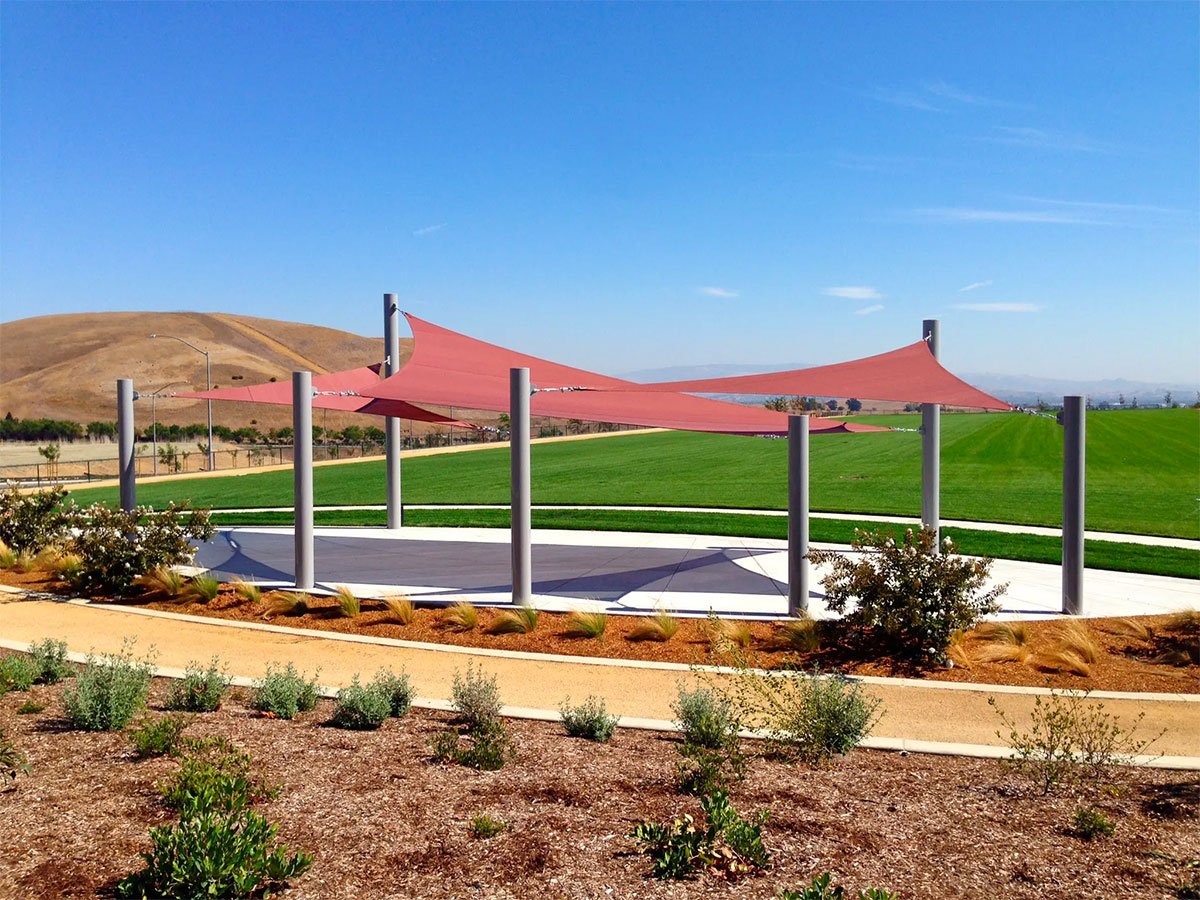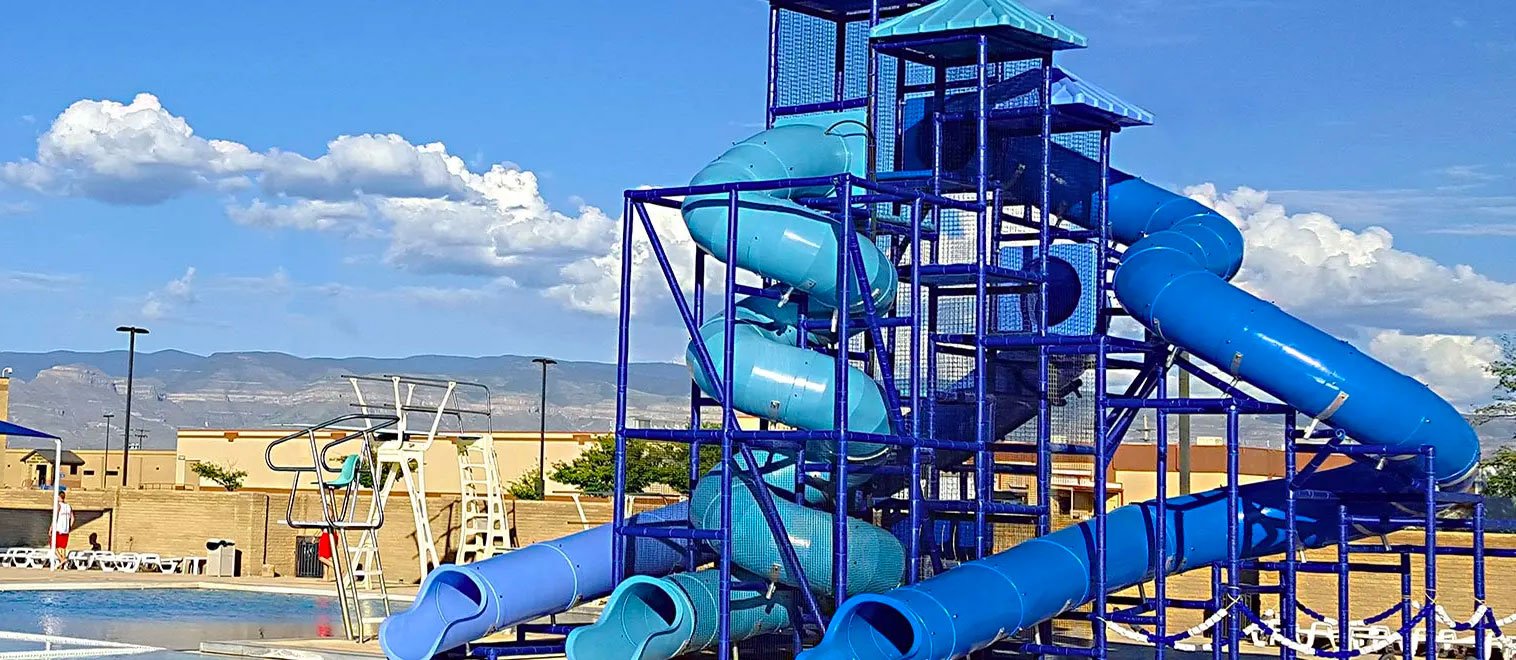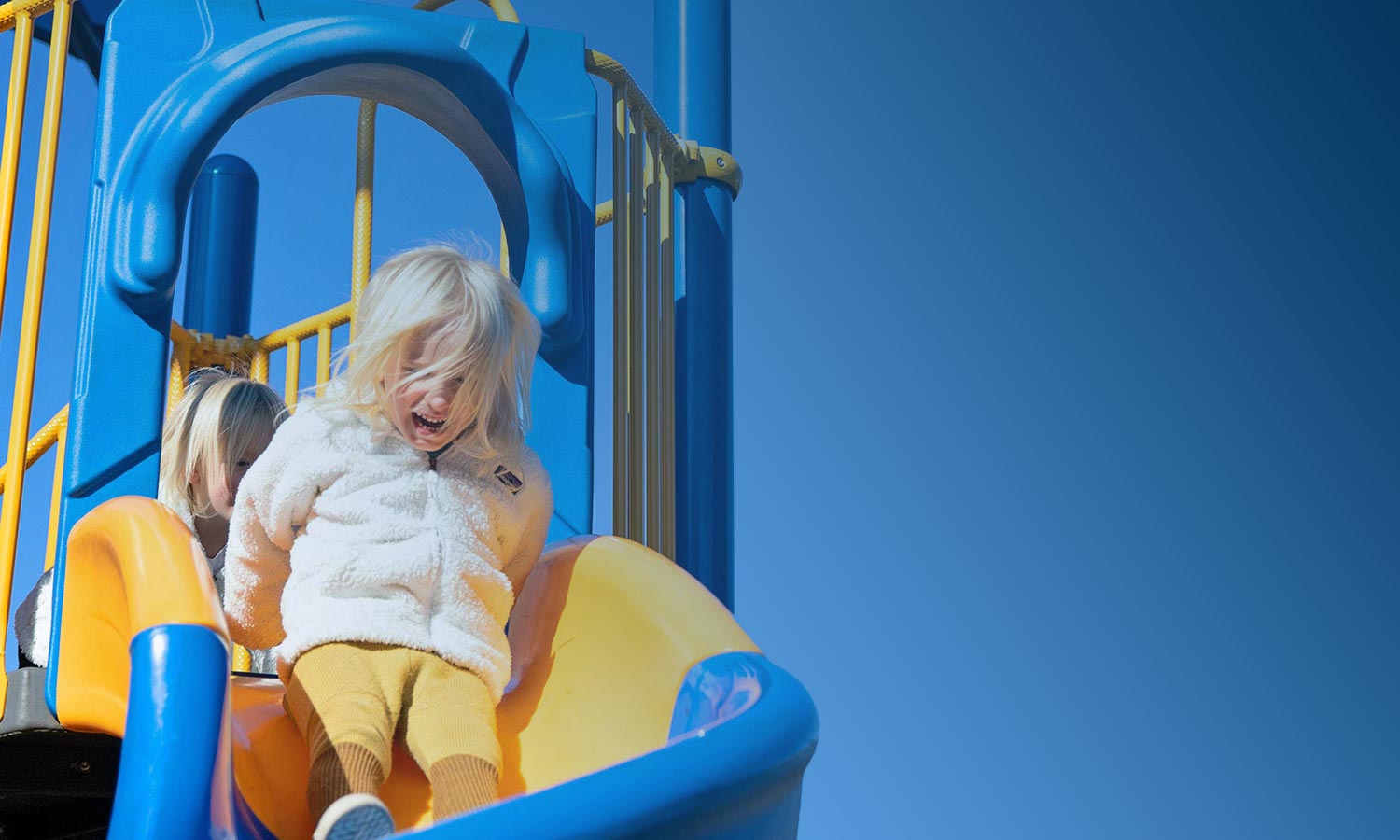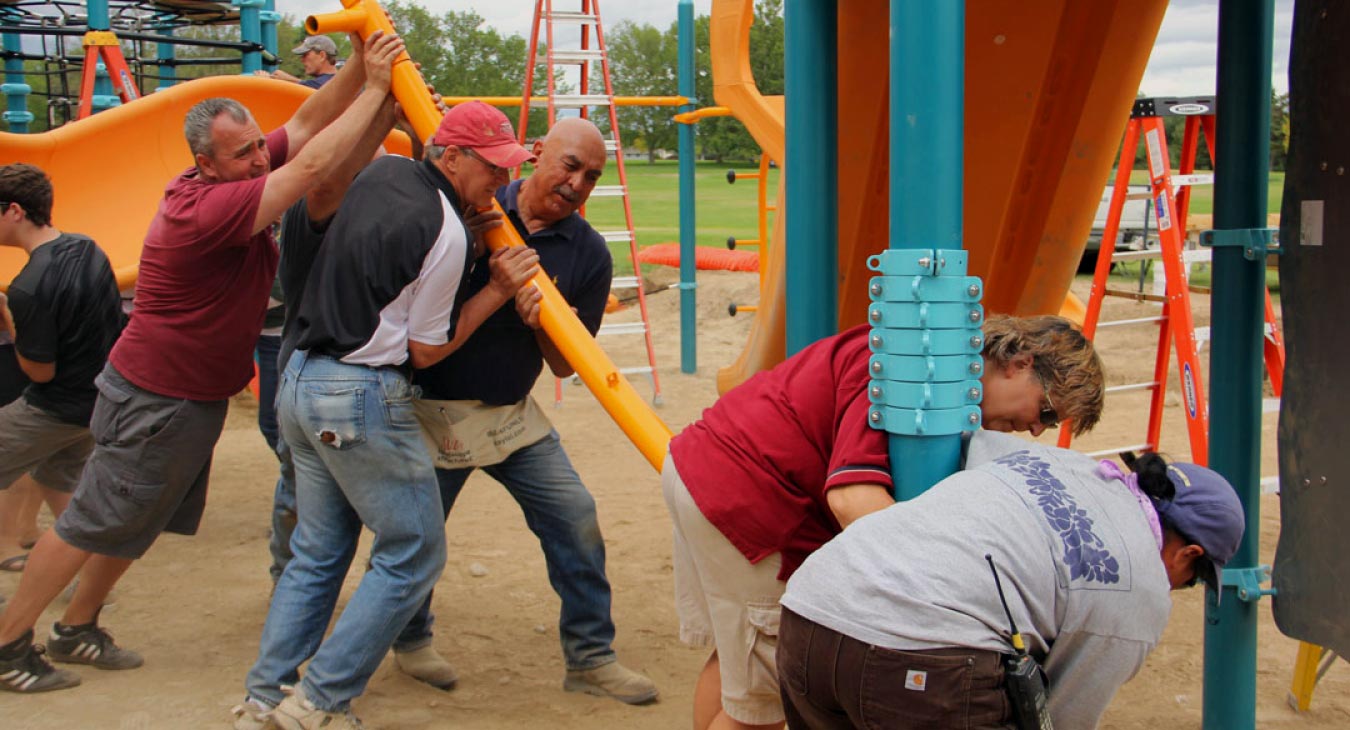Many parents seem to prioritize indoor activities over outdoor play for their kids, often due to convenience and a desire for a safer environment. The ease of turning on an animated show or finding a video on YouTube means that visiting a nearby playground may be overlooked. Additionally, concerns about public safety often lead parents to focus on indoor games and digital content for their children's entertainment. The convenience of propping an animated show or a YouTube video prompts many parents to skip the local playground. Public safety also factors in on many parents’ choice to center their children’s entertainment on home games and digital content.
However, outdoor play is not just about fun. Spending time outside impacts your child’s physical, mental, and social well-being significantly.
Relevant statistics:
- By age ten, 42% of kids already own a smartphone. The number significantly jumps to 71% by the time they turn 12.1
- Some kids own phones as early as one.2
- Kids spend alarmingly over seven hours of screen time daily and only four to seven minutes outdoors.3
- Only one in four (27%) children now play outside regularly, a comparatively low number to the 76% of baby boomers who enjoyed the outdoors as kids.4
- An estimated 90% of children yearn for more outdoor playtime, but they or their parents are too busy.5
The Role of Outdoor Play in the Stages of a Child’s Development
It’s no secret that children love to play, laugh, and have fun, but this isn’t entirely for entertainment’s sake. The stages of play directly correlate to a child’s developmental progress. Read more on how these hierarchies work together.
Toddler (Ages 2 to 3)
The toddler phase is when children develop their motor skills and achieve breakthroughs in communication. They can walk, run, and climb unassisted. They can talk and answer questions with phrases and piece together a complete sentence.
Toddlers go through two play stages: the spectator and the parallel player. Their connection with other kids is mainly through observation. Bringing them to a local park or a neighboring playground allows them to get acquainted with fellow kids, although they won’t play with them just yet. This eases them into the socialization aspect of their development early on.
Preschool (Ages 3 to 5)
Children at preschool age exhibit enhanced motor capabilities and independence. They can run, skip, hop, write, draw, and climb up stairs without wobbling. They’re also more autonomous in essential everyday skills such as getting dressed and going to the toilet.
From being an observer, they’ll become an associative (ages 3 and 4) and cooperative player (year 4+). As associative players, they’ll get together but with minimal interaction. As they develop into the cooperative stage, they’ll be more participative and communicative with others as they engage in similar activities.
Playing with other kids will contribute to their growth. Playing tag and sharing the playground outside will become a defining part of their growth as they participate in organized plays, communicate at greater lengths, and learn all about teamwork.
School Age (ages 6 to 12)
Fully developed motor function and language skills characterize this stage. Kids are increasingly independent, confident, capable of making their own decisions, and skilled at expressing their opinion. They’re also more responsible and can perform tasks with no supervision.
School-age kids are cooperative players and begin developing meaningful connections with others. Spending time with friends outside the home satisfies their need for belongingness. The playground is a place to meet new people, strengthen friendships, and make memories to last a lifetime.
Understanding the Six Stages of Play
There are six phases in how children engage and communicate with others in a play setup. Learn about it here.
Unoccupied Play (0 to 3 months)
The fun starts at zero! For the first three months, infants move their arms, hands, legs, and feet at random as a form of play. This is their way of understanding how their body moves. They also react to sounds, faces, and moving objects, which makes music, rattles, and peek-a-boos a significant component of their playtime.
Solitary Play (0 to 2 years)
For up to 2 years, kids love their alone time. They don’t bother playing with other kids. As soon as they’re able to lift their head, sit up, and grab things, they can pick up toys, scan through picture books, and scribble with crayons.
Spectator or Onlooker Behavior (2 years)
After the solitary play stage, they slowly show interest in other kids. They become a spectator or onlooker and watch other kids play, but they won’t join the fun just yet.
Parallel Play (2+ years)
From mere observers, kids in the parallel player stage now go near or play alongside others. This is when the desire to socialize and be with other kids starts. Interaction is still minimal, and they won’t play with each other, but they may play with the same toys or copy other children.
Associate Play (3 to 4 years)
In this stage, the child’s attention will shift from their own agenda to other children’s. They’ll use the observations they learned from being a parallel player and onlooker to engage and share an activity with fellow kids and adults.
Cooperative play (4+ years)
Children now participate in organized play with set rules, and they team up to accomplish goals. They can also assign roles and follow a leader. This is when they learn to navigate social challenges such as sharing, resolving conflict, and problem-solving.

The Benefits of Letting Your Kids Play Outdoors
Outdoor play doesn’t only bolster the social aspect of a child’s development. It’s a free and simple means to help shape a child’s growth during the most defining stages of their life. Here are some of the best benefits of allowing your kid to wander outside.
Aid in Sensory Development
American kids spend 18.6 hours on screen-based activities and only 10.6 hours of outdoor play weekly.6 Screen devices like TVs, tablets, and computers limit the child’s sensory stimuli to hearing and sight. Increased screen time will adversely affect how kids develop their sensory skills.
Playing outside provides kids with an environment to engage all their senses. There are plenty of things to see (e.g., meeting new faces), hear (e.g., reacting to loud noises), smell (e.g., the smell of a friend’s perfume), touch (e.g., flower picking), and taste (e.g., trying out food at nearby stalls). These experiences enable them to get familiar with new sensations.
Enhance Physical and Mental Health
Preschool to school-age children experience rapid physical growth and changes in mental capabilities. This is a crucial period for their long-term well-being. They must immerse themselves in activities that cater to these aspects.
Running, jumping, climbing the slides, and other games help them get regular exercise. Using equipment, such as bikes and skateboards, helps improve their balance, muscle strength, and coordination. Being outside also frees them from the pressure of chores and homework, significantly reducing stress levels for a truly fun playtime.
Boost Independence and Confidence
Outdoor play is the best chance to build a child’s independence. Without home constraints and close adult supervision, they have the liberty to explore, discover new things, test their capabilities, and acquire necessary skills. The freedom helps bolster their confidence in taking risks and adjusting to new challenges.
Get Closer to Nature
There’s a reason people hike, hit the beach, or go on green walks when stressed or overwhelmed. Nature is therapeutic. It has a calming effect, sparks creativity, incites joy, and stimulates the nervous system. Plus, vitamin D from the sun helps strengthen bones and regulates the immune system. Your child will benefit from these benefits and more.
How to Encourage Your Kids to Get Outside
According to a Pew Research Center survey, 88% of parents reported that their child watches TV, 67% mentioned using a tablet, and a close 60% said they used a smartphone.7 Kids who have early access to devices may find the idea of outside play moot. Every source of entertainment is available in the palm of their hand, literally.
They need that gentle nudge and a helping hand to navigate the outside. Here are ways to get your kids outdoors and connect them to nature effectively.
Start with Your Backyard
Your backyard is a great place to get them used to outdoor play. The most challenging part is limiting their screen time, but once you get that out of the way, the next steps will be a breeze. Introduce them to backyard games and activities, like gardening, playing tag, spray painting, and more. Many parents also build playgrounds in their backyards, so their kids have a safe, fun environment where they can freely play.
Do Routine Outdoor Activities
Something as simple as taking a stroll outside, walking the dog, or dining out contributes to introducing your kids to outside sceneries.
Bring an Indoor Activity Outside
Can’t let go of an indoor hobby? Tell your kids to bring it outside. The park and the playground benches nearby are great spots for reading, drawing, and more.
Be Their Playmate
Join your kids for a game of hopscotch, push them on the playground swings, and run with them. Playing with your kids outside is the easiest way to tell them that being outdoors is fun.
Arrange Outdoor Playdates with Family and Friends
It’s intimidating to deal with unfamiliar faces outside. Invite kids that they’re comfortable hanging out with. These may include school friends, relatives, and close neighboring kids. Together, they can easily wander outdoors and even meet new friends.
Building Your Child’s Social Skills in a Play Environment
Your kids might not love the outdoors immediately, even after employing the right techniques to help them have fun outside. Some children are just harder to crack, and yours might be one of them.
Make sure you’re there with them when they spend time outside. If they find it hard to approach other kids and interact with them, be their friend first. Listen to their concerns and affirm any emotions of anxiety and fear they may have. Communication and motivation are key to helping your kids work up the courage to meet others.
As much as you want to hold their hand every time they encounter a problem, stay back and only involve yourself when necessary. Let them handle things on their own. This helps foster their confidence and resilience when faced with unfavorable situations.
How Outdoor Play Molds Your Child’s Holistic Growth
The playground and other play environments mirror every setting a child will go through in their lifetime. Much like the playground, they will experience peer conflict, loss, isolation, and more in the classroom, on the sports field, or in their adult life.
Helping your kid conquer the outdoors equips them to thrive in all settings. Outdoor play can help your child develop important skills to navigate through the real world:
- Better communication with others
- Ease in building relationships
- Willingness to take risks
- Resiliency to harsh situations
- Enthusiasm for learning and exploration
- Efficient stress management
- High self-esteem
- Accountability
Conclusion
Early childhood is an influential time in your child’s life. Every activity they do contributes to their growth. There are many factors at play in your child’s developmental process. Among these is how they spend their playtime.
This is a crucial topic as this is one of the first settings where your kid can exercise their social muscles and shape their interpersonal capabilities. Letting them play outdoors to interact, communicate, and explore is the easiest way to support their development and help them manage situations on their own.
References:
- Gilchrist, K. (2022, November 29). Don’t want to give your kid a smartphone? Here are some alternatives. CNBC. https://www.cnbc.com/2022/11/25/how-to-know-when-to-give-a-child-a-smartphone-what-are-the-alternatives.html
- Statista. (2023, January 19). First-time cell phone ownership among children in the United States 2019, by age. https://www.statista.com/statistics/1058938/cell-phone-owhnership-among-children-in-the-us-by-age/
- Cohen, D. (2021, September 21). Why Kids Need to Spend Time in Nature. Child Mind Institute. https://childmind.org/article/why-kids-need-to-spend-time-in-nature/
- Save The Children. (2022, August 5). Children Today Far Less Likely To Play Outside Than Their Grandparents. https://www.savethechildren.org.uk/news/media-centre/press-releases/children-today-62-percent-less-likely-to-play-outside-than-their
- Giving children the freedom to play outside is vital for their skills and social development says National Geographic-backed study. (2019, January 7). National Geographic. https://www.nationalgeographic.co.uk/history-and-civilisation/2019/01/new-report-highlights-the-importance-of-outdoor-play
- Armstrong, M. (2017, November 1). Screen Time Dominates Kid’s Play. Statista Infographics. https://www.statista.com/chart/11651/screen-time-dominates-kids-play/
- Nadeem, R. (2020, August 27). 1. Children’s engagement with digital devices, screen time. Pew Research Center: Internet, Science & Tech. https://www.pewresearch.org/internet/2020/07/28/childrens-engagement-with-digital-devices-screen-time/













